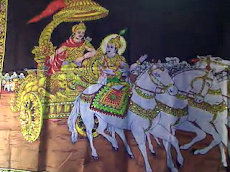Wednesday 31 March 2010
Monday 29 March 2010
Tuesday 23 March 2010
Monday 22 March 2010
Sunday 21 March 2010
Saturday 20 March 2010
Wednesday 17 March 2010
Tuesday 16 March 2010
Monday 15 March 2010
Sunday 14 March 2010
Saturday 13 March 2010
Friday 12 March 2010
Thursday 11 March 2010
Wednesday 10 March 2010
Tuesday 9 March 2010
Monday 8 March 2010
Saturday 6 March 2010
Cannstatter Volksfest
History
in the course of the period of political upheaval and economic weakness, in 1817 King Wilhelm I. of Württemberg, with the formation of the “Centralstelle des landwirtschaftlichen Vereins” (“Central Point of the Agricultural Association”), laid the foundation for what is known today as the Cannstatter Volksfest. An agricultural festival with horse races, the awarding of prizes for extraordinary performance in livestock breeding together with a general festival was expected to rebuild the Württemberg economy, which was heavily damaged after the Napoleonic wars.
The first Cannstatter Volksfest

- The Cannstatter Volkfest in the thirties
The following year, on September 28, 1818, one day after the King’s 36th birthday, it happened: The Cannstatter Volksfest was held for the first time, 193 years ago as seen from today. And since 1818 the Cannstatter Wasen has been the site of the huge festivity. At that time it was an idyllic, somewhat watery Neckar floodplain with no surrounding development, between meadows and vineyards, situated along the Neckar which was not yet dammed up. Within sight there was also the royal Villa Bellevue at the Wilhelma, which are today the only zoological-botanical gardens in Germany. Therefore it was a short ride by coach for the founder of the festival, who insisted on opening it ceremonially and to be witness of a successful start. The original idea of the “king among farmers and farmer among kings”, as Wilhelm I. was called by his contemporaries, still lives on today in the form of the “Agricultural Main Festival” taking place parallel to the actual festival, which is now an extensive exhibition on state-of-the-art agricultural technology in Baden-Württemberg.
Festival parade for the first time in 1841
There were almost always festival parades. For the year 1841 a festival parade with more than 10,000 participants and far more than 100,000 spectators along the streets of Stuttgart was reported. On that day not only the festival itself, but also the anniversary of the 25 years’ government of the founder, King Wilhelm I., was celebrated. And some more information about the number of participants: At that time Stuttgart had barely 40,000 residents. The first festival parade in today’s sense took place in 1927 with the official start at Cannstatt’s kursaal and ending on the Wasen. In 1911, as befits the home town of Gottlieb Daimler and Wilhelm Maybach, the first festival motorcade was held.
In the early days the number of “festival booths” with fairground entertainers and beer stands was small and was confined to the boundary of the actual fairground, in favor of the royal loge and the stand for the dignitaries. A little later, in the year 1860, the “Amts- und Intelligenzblatt für das Oberamt Cannstatt“ (Official and Intelligence Journal for the District Authority) reported a scene, which sounds quite familiar to the situation today, in which the booths were organized “in three main streets and numerous side streets” for the first time.
As of 1882, upon the direction of King Karl, the son and successor of Wilhelm I., the Cannstatter Volksfest or – as it was called in those days – the “Agricultural Main Festival” was no longer organized yearly, but only every two years. This rule stayed effective until the death of the king in 1891. By reason of this rule and a number of years without festivals during and after the two world wars in the 20th century, today “only” the 164th Cannstatter Volksfest is celebrated – because 28 years in total stayed without any festival.
In the early days the number of “festival booths” with fairground entertainers and beer stands was small and was confined to the boundary of the actual fairground, in favor of the royal loge and the stand for the dignitaries. A little later, in the year 1860, the “Amts- und Intelligenzblatt für das Oberamt Cannstatt“ (Official and Intelligence Journal for the District Authority) reported a scene, which sounds quite familiar to the situation today, in which the booths were organized “in three main streets and numerous side streets” for the first time.
As of 1882, upon the direction of King Karl, the son and successor of Wilhelm I., the Cannstatter Volksfest or – as it was called in those days – the “Agricultural Main Festival” was no longer organized yearly, but only every two years. This rule stayed effective until the death of the king in 1891. By reason of this rule and a number of years without festivals during and after the two world wars in the 20th century, today “only” the 164th Cannstatter Volksfest is celebrated – because 28 years in total stayed without any festival.
"Festival of the Swabians" acts as a draw since its beginning

- The Cannstatter Volksfest in the thirties
Over the decades the Cannstatter Volksfest has developed constantly. At the same time it managed in a likeable and unique way to combine tradition and modern spirit. About four million people visit the „Festival of the Swabians“ every year.
According to contemporary records, in 1818 already more than 30,000 participants and guests were enthusiastically celebrating. Some of them had, as it is mentioned, endured a journey of several days from all parts of the kingdom. At that time the number of participants was noticeably higher than the number of the residents of Stuttgart and Cannstatt put together. And if one considers that the first Cannstatter Volksfest took just one single day, which was just this day of September 28, 1818, then the “daily average of visitors” can definitely stand comparison with today’s numbers. Even in its early days, then, the festival was no small event, but immediately started as a very real hit with the public, which it still is to this day.
Seldom did the Cannstatter Volksfest last as long as it does today. In the 19th century it initially took only one single day, a little later it was three, then four, as of the late 1920s of the 20th century it was finally five festival days. After World War II the festival, which by now was very traditional, finally grew to its familiar size: at the start of the 1950s it was ten days, then twelve and since 1972 sixteen days, and since 2007 for the first time it is seventeen festival days.
According to contemporary records, in 1818 already more than 30,000 participants and guests were enthusiastically celebrating. Some of them had, as it is mentioned, endured a journey of several days from all parts of the kingdom. At that time the number of participants was noticeably higher than the number of the residents of Stuttgart and Cannstatt put together. And if one considers that the first Cannstatter Volksfest took just one single day, which was just this day of September 28, 1818, then the “daily average of visitors” can definitely stand comparison with today’s numbers. Even in its early days, then, the festival was no small event, but immediately started as a very real hit with the public, which it still is to this day.
Seldom did the Cannstatter Volksfest last as long as it does today. In the 19th century it initially took only one single day, a little later it was three, then four, as of the late 1920s of the 20th century it was finally five festival days. After World War II the festival, which by now was very traditional, finally grew to its familiar size: at the start of the 1950s it was ten days, then twelve and since 1972 sixteen days, and since 2007 for the first time it is seventeen festival days.
The Fruit Column
The Fruit Column is the emblem of the Cannstatter Volksfest. Right from the festival’s beginning in 1818 there was a towering column which was decorated with lots of fruits, corn and vegetables. So this symbol still recalls the origin of the Cannstatter Volksfest as an agricultural festival. The first Fruit Column was founded by King Wilhelm I. and designed and built by the Württembergian architect to the imperial court Nikolaus Friedrich von Thouret.
With the start of the first German republic after World War I, the Fruit Column, which by then was more than 100 years old, was banned from the Cannstatter Wasen as a “monarchistic” relic. Since 1935, the 100th anniversary, it has stood in its traditional position. Today’s Fruit Column originates from the year 1972 and, regarding its diameter, hight and coloring, it is built after the historical model. It is 26 meters high, stands on a five meter base and weighs about three tons. The paring right on top of the column is decorated with fruits and plants and weighs another 600 kilograms. The outer part is made from wood, a steel construction is inside.
Over the decades the Fruit Column’s appearance has changed several times. Until 1995 every year after the Cannstatter Volksfest it was removed and stored. In the years that followed it experimentally remained on the Wasen, so that it could be seen during the Frühlingsfest, the spring festival, as well. For a few years now only the top gets removed, the base, which carries the Cannstatter Kanne, a coppery can, stays at the fairground.
With the start of the first German republic after World War I, the Fruit Column, which by then was more than 100 years old, was banned from the Cannstatter Wasen as a “monarchistic” relic. Since 1935, the 100th anniversary, it has stood in its traditional position. Today’s Fruit Column originates from the year 1972 and, regarding its diameter, hight and coloring, it is built after the historical model. It is 26 meters high, stands on a five meter base and weighs about three tons. The paring right on top of the column is decorated with fruits and plants and weighs another 600 kilograms. The outer part is made from wood, a steel construction is inside.
Over the decades the Fruit Column’s appearance has changed several times. Until 1995 every year after the Cannstatter Volksfest it was removed and stored. In the years that followed it experimentally remained on the Wasen, so that it could be seen during the Frühlingsfest, the spring festival, as well. For a few years now only the top gets removed, the base, which carries the Cannstatter Kanne, a coppery can, stays at the fairground.
labels:
Fest
Friday 5 March 2010
Thursday 4 March 2010
Wednesday 3 March 2010
News
Thought For The Day
The lotus leaf is born under water; it
floats on water; but it does not get
wet. You too, must be in the world
likewise-in it, by it, for it, but not of
it. This is the special feature of the
Vidya (higher education), to prepare
you for this role. That is to say, with
the heart immersed in the Divine and
the hands busy in work, you must live
thus on earth. Love should not
degenerate into an article of commerce.
Love fulfils itself in Love.
- Baba
The lotus leaf is born under water; it
floats on water; but it does not get
wet. You too, must be in the world
likewise-in it, by it, for it, but not of
it. This is the special feature of the
Vidya (higher education), to prepare
you for this role. That is to say, with
the heart immersed in the Divine and
the hands busy in work, you must live
thus on earth. Love should not
degenerate into an article of commerce.
Love fulfils itself in Love.
- Baba
labels:
sri saththiya sai baba
Tuesday 2 March 2010
News
Thought For The Day
Returning injury for injury, harm for harm,
or insult for insult only adds to the Karmic
burden, which has to be endured and
eliminated in future lives. This burden is
termed "Aagaami" (impending). You can't
escape the task of undergoing the
consequences of your thought, word,
and deed in due course. Paying evil for
evil can never lighten the weight of Karma;
it will only become heavier. It might confer
immediate relief and contentment, but it can
only make you suffer later. Forbearance,
therefore, instructs you to do good even to
those who injure you.
- Baba
Returning injury for injury, harm for harm,
or insult for insult only adds to the Karmic
burden, which has to be endured and
eliminated in future lives. This burden is
termed "Aagaami" (impending). You can't
escape the task of undergoing the
consequences of your thought, word,
and deed in due course. Paying evil for
evil can never lighten the weight of Karma;
it will only become heavier. It might confer
immediate relief and contentment, but it can
only make you suffer later. Forbearance,
therefore, instructs you to do good even to
those who injure you.
- Baba
labels:
sri saththiya sai baba
Monday 1 March 2010
Learning English- Lesson - one
Learning English - Lesson One (Introduction)
labels:
Learning English
News
Thought For The Day
One of the most important virtues to be
cultivated is unshakable, unwavering faith
- faith in the Shastras (sacred scriptures)
and the moral codes they contain, as well
as in the Atma and your Guru (preceptor).
Scriptures are designed to ensure the
peace and prosperity of the world and the
spiritual perfection of mankind. They have
before them this great aim; they show the
way to its realisation. So, you must place
faith in such holy scriptures, Gurus
(preceptors), and elders. Gurus are
indeed worth worshipping, for they show
us the Shreyomarga (path of the ultimate
fulfilment). The one who has unwavering
faith will achieve this wisdom.
- Baba
One of the most important virtues to be
cultivated is unshakable, unwavering faith
- faith in the Shastras (sacred scriptures)
and the moral codes they contain, as well
as in the Atma and your Guru (preceptor).
Scriptures are designed to ensure the
peace and prosperity of the world and the
spiritual perfection of mankind. They have
before them this great aim; they show the
way to its realisation. So, you must place
faith in such holy scriptures, Gurus
(preceptors), and elders. Gurus are
indeed worth worshipping, for they show
us the Shreyomarga (path of the ultimate
fulfilment). The one who has unwavering
faith will achieve this wisdom.
- Baba
labels:
sri saththiya sai baba
Subscribe to:
Posts (Atom)







































